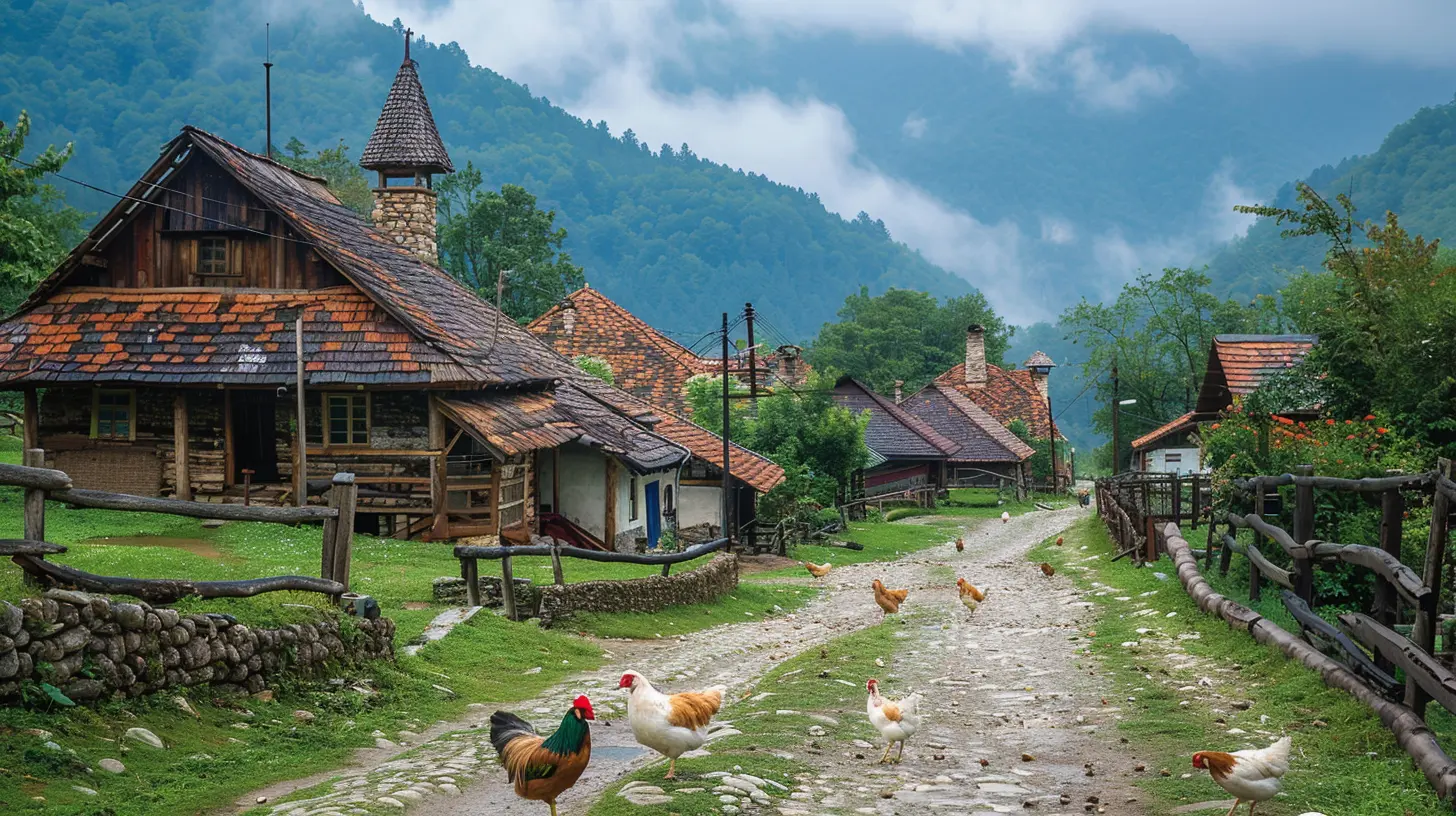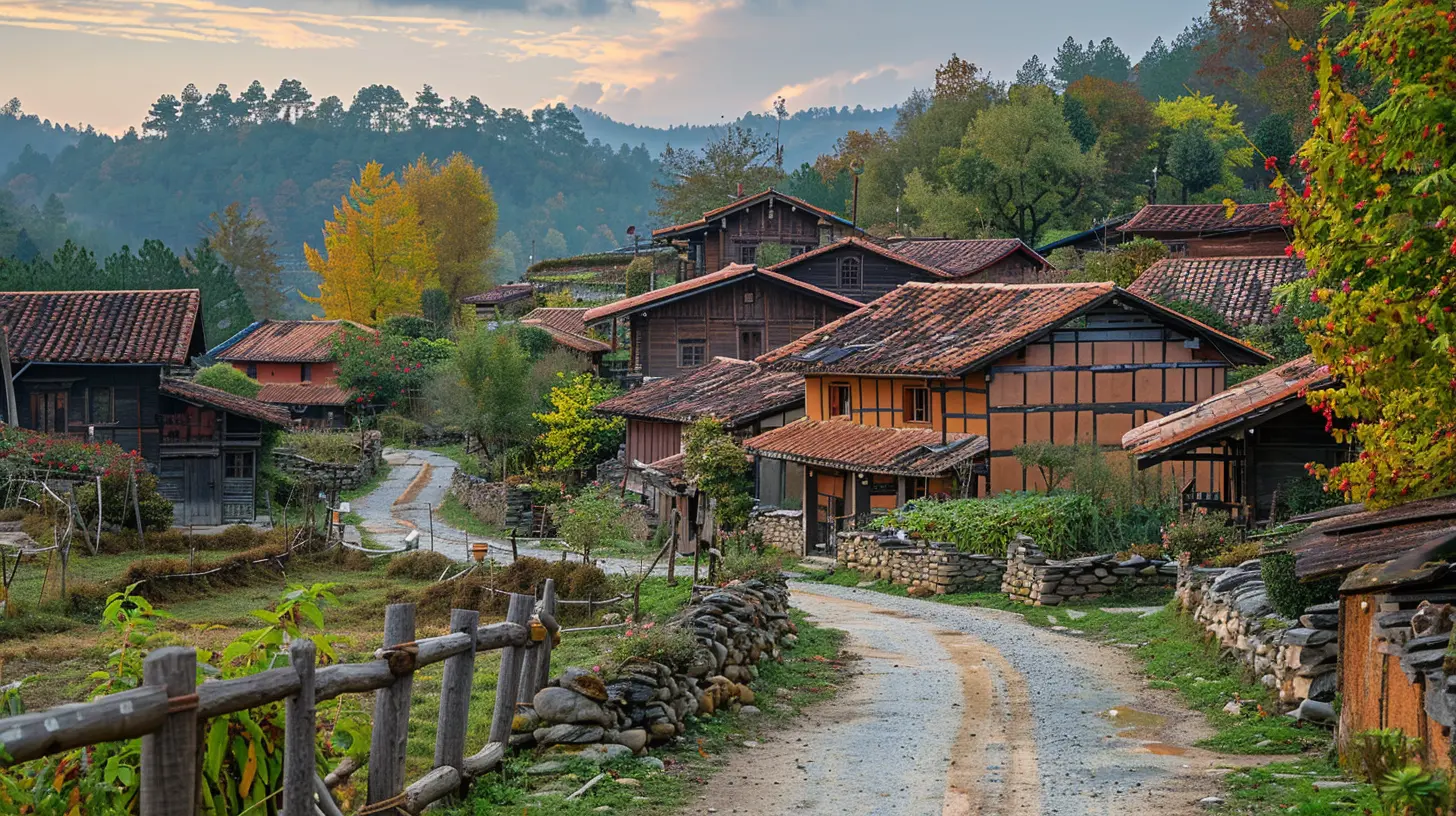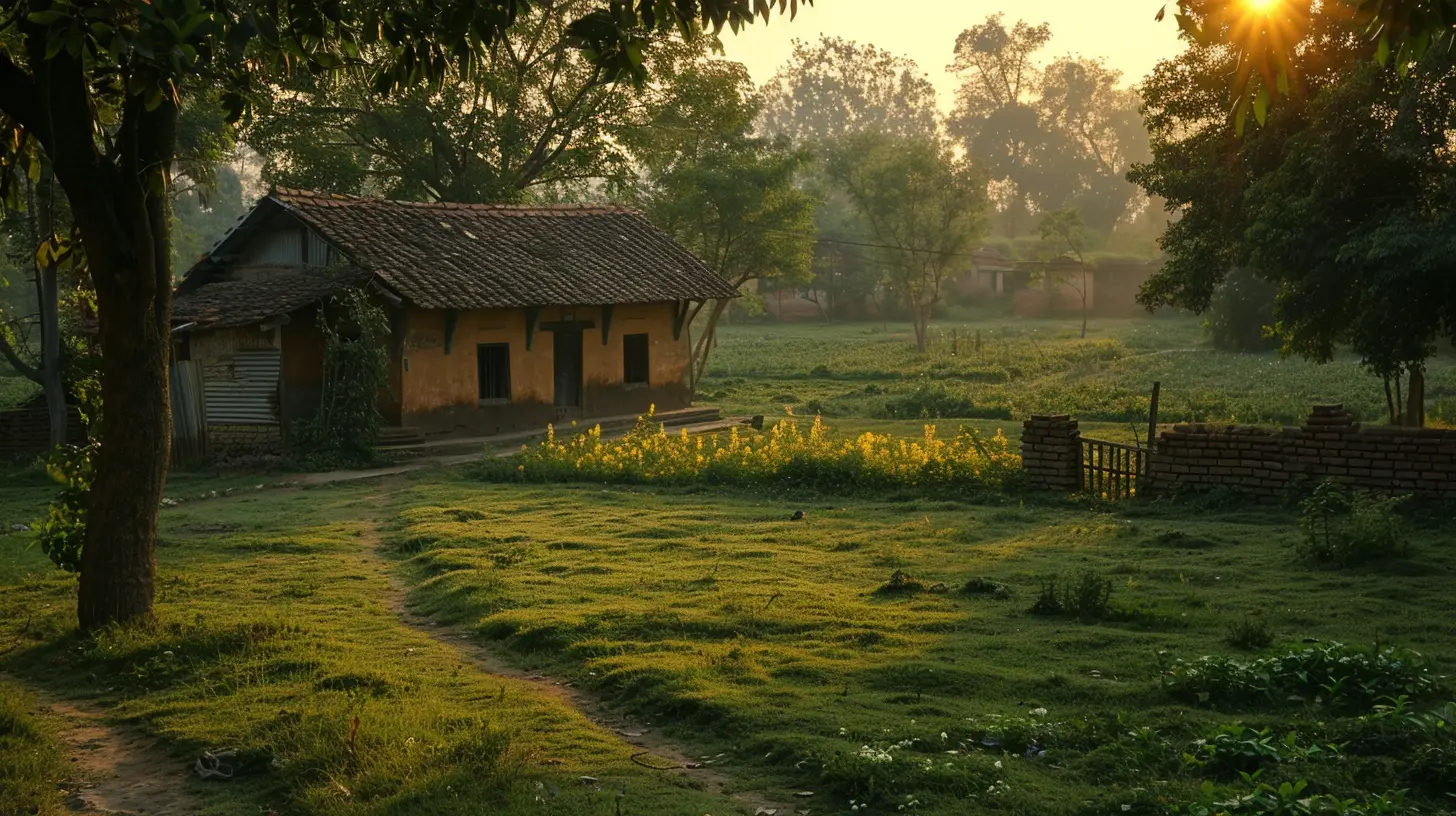Village Life: A Glimpse into Rural Traditions
8 September 2025
Life in the village has always had a charm of its own. Away from the hustle and bustle of city life, rural communities offer a glimpse into a simpler, more grounded way of living. From age-old traditions to breathtaking landscapes, village life is a world where nature and culture walk hand in hand. But what makes it so unique? Let’s take a deep dive into the heart of rural traditions and uncover the beauty of countryside living. 
The Simplicity of Daily Life
Unlike the fast-paced urban lifestyle, village life flows at a more natural rhythm. People wake up with the sun and retire for the night as darkness settles. There's no rush to beat traffic, no neon-lit sky, and certainly no blaring horns disturbing the peace.Daily activities revolve around agriculture, livestock, handicrafts, and small-scale businesses. Farming remains the backbone of most villages, with families working together to cultivate crops and rear animals. Every task, from plowing fields to collecting firewood, is a community affair—an age-old tradition that fosters strong relationships.
And let’s not forget the joy of fresh, homegrown food. Imagine plucking vegetables straight from the garden, milking cows at dawn, or grinding wheat by hand. There’s an unspoken satisfaction in consuming what you produce, something city life rarely offers. 
Strong Sense of Community
One of the biggest blessings of village life is the strong sense of togetherness. Unlike cities, where people often don’t know their neighbors, villages thrive on unity.Festivals, weddings, and even daily chores become social gatherings. When someone needs help, the entire community steps in without hesitation. This bond isn’t just about friendship—it’s survival, safety, and belonging all rolled into one.
Children grow up in extended families, learning the values of respect and cooperation from an early age. Elders are seen as wise guardians, guiding younger generations with their life experiences. Even strangers are welcomed with open arms, as hospitality is deeply ingrained in rural culture.
Modern cities could take a page from rural communities—imagine a world where neighbors are like family, and helping hands are always around. 
Traditional Celebrations and Rituals
Villages are living museums of cultural heritage. Every festival, ceremony, and local tradition reflects a deep-rooted connection with history and nature.Take harvest festivals, for example. Whether it's Pongal in India, Thanksgiving in America, or Mid-Autumn Festival in China, rural communities celebrate the gift of good crops with joyous feasts and festivities. These traditions not only mark the changing seasons but also honor the hard work of farmers.
Then there are folk dances, music, and storytelling sessions that bring people together. From flamenco in Spain to Bihu dance in Assam, every region has its own way of expressing joy. These art forms are passed down through generations, keeping cultural identities alive.
Even religious rituals hold a special place. Be it lighting oil lamps, conducting prayers under ancient trees, or offering food to deities, rural traditions are deeply spiritual. They bind individuals with a sense of purpose and faith, something that urban life often lacks. 
The Beauty of Nature
Villages offer an unfiltered, breathtaking connection with nature. Rolling fields, flowing rivers, and lush green forests paint a picture straight out of a postcard.One of the biggest perks? Clean air. Unlike cities choking on pollution, rural areas enjoy fresh, untainted oxygen. Waking up to chirping birds instead of car horns is a luxury that village dwellers experience daily.
The starry sky in villages is another wonder. Without skyscrapers and artificial lights, the night sky looks like a vast glittering canvas. Stargazing becomes a nightly ritual, something city folk rarely get to enjoy.
And the wildlife? From playful squirrels to majestic peacocks, villages are home to countless creatures that freely roam around. It's like living inside a nature documentary—except it's real and right outside your door.
Self-Sufficient Living
Villages have long practiced self-sufficiency. People rely on natural resources and traditional skills rather than modern conveniences.Take farming, for instance. Most villages grow their own food, reducing reliance on packaged goods. Milk, eggs, fruits, and even herbal medicines are sourced locally. Cooking from scratch is a norm, making meals both healthier and tastier.
Handicrafts are another highlight. Rural artisans create stunning pottery, handwoven fabrics, and intricate woodwork—skills passed down through generations. These products are not just art; they’re a reflection of cultural identity.
What’s even more impressive is the barter system that still exists in some places. Imagine exchanging a basket of mangoes for a sack of rice—no money involved, just goodwill and trust.
Limited but Fulfilling Entertainment
No high-tech malls, no cinemas, and certainly no virtual reality zones—yet, village life is never boring. Entertainment is woven into everyday experiences.People gather for folk music, dance, and storytelling sessions under the moonlight. Whether it's elders recounting mythical tales or children putting up spontaneous dramas, there’s always something happening.
Traditional games like kite flying, wrestling, and bullock cart races keep the spirit of fun alive. Festivals bring out vibrant processions, melodious songs, and impromptu dance performances.
Even simple joys—like sitting by a bonfire, singing folk tunes, or watching the sunset—offer deep contentment. In a world obsessed with digital connection, villages remind us that real joy lies in moments, not screens.
Challenges of Village Life
Of course, village life isn’t all roses. Limited healthcare, fewer educational institutions, and lack of modern infrastructure make things challenging. Long distances to hospitals and schools mean rural communities often struggle with access to basic services.Employment opportunities are also scarce. Many young individuals migrate to cities in search of better jobs, leaving behind an aging population. This shift disrupts traditional lifestyles, threatening the very culture that defines village life.
But despite these struggles, the resilience of rural communities is admirable. They find ways to thrive—adapting old customs to modern realities and ensuring traditions aren’t lost in the pages of history.
The Future of Village Life
As modernization sweeps across rural areas, villages are changing. Electricity, internet, and better transport are bridging the gap between rural and urban life. While this progress is necessary, preserving local traditions is equally important.Sustainable tourism is playing a big role in keeping village cultures alive. Farm stays, eco-tourism, and cultural festivals allow visitors to experience rural life firsthand. This not only boosts local economies but also raises awareness about the importance of traditional practices.
Villages are the heart and soul of any country. They carry the stories, traditions, and wisdom of ancestors. While the world may race toward urbanization, rural life remains a timeless treasure—a sanctuary where simplicity, community, and nature thrive in harmony.
Final Thoughts
Village life offers a rare blend of peace, tradition, and community spirit. It teaches valuable lessons about self-sufficiency, human connection, and the beauty of nature. While cities may shine with skyscrapers, villages glow with the warmth of culture and heritage.Wouldn’t it be wonderful to take a break from the chaos of urban living and soak in the simplicity of village life, even if just for a while?
all images in this post were generated using AI tools
Category:
Local ExperiencesAuthor:

Ian Powell
Discussion
rate this article
1 comments
Jocelyn Black
Exploring village life reveals not just traditions, but the essence of community and simplicity. In a world racing forward, these rural practices remind us of the profound beauty in connection, heritage, and the rhythms of nature.
September 9, 2025 at 3:38 PM

Ian Powell
Thank you for your thoughtful comment! I wholeheartedly agree—village life truly embodies the beauty of connection and the richness of our heritage amidst a fast-paced world.


